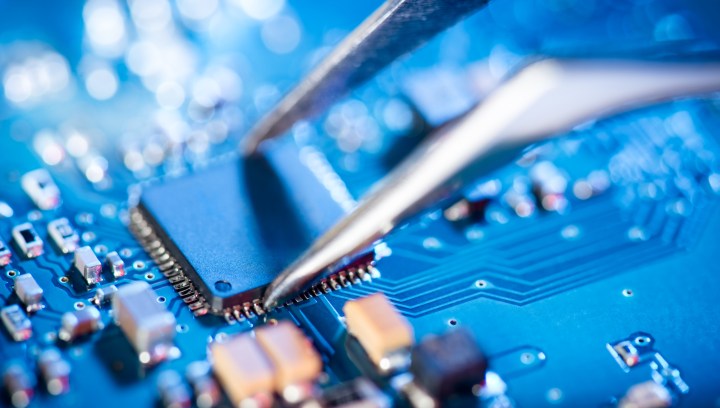
The transistor’s story is one of innovation and immigration
The transistor’s story is one of innovation and immigration

On Dec. 16, 1947, the future began with the invention of the transistor. A lab notebook indicates that researchers at Bell Telephone Laboratories first got the thing to work on this day 75 years ago. We’ve been looking at the ecosystems of transistor innovation from New Jersey to Texas to California. And now, the role of immigration, starting with an elusive desktop calculator: the Busicom 141-PF.
“I’ve been hoping for a long time that somebody would find a 141-PF sitting in their closet gathering dust and go, ‘Hey, you know, do you want this thing?’” said Rick Bensene. He owns a lot of vintage calculators as founder of the Old Calculator Web Museum. But this one is still missing from the collection.
“It’s the 141-PF which is the special one,” Bensene said. “That became the very first consumer item to be produced that utilized a computer on a chip. They’re very hard to find today.”
This calculator was marketed by a Japanese company, Nippon Calculating Machine Corp., but its brain was devised in California in 1971. That brain was the first commercial microprocessor. It was developed at Intel by Ted Hoff from Rochester, New York, and Federico Faggin of Vicenza, Italy, who was assisted by Masatoshi Shima of Japan. Embedded in that were 2,000 transistors that were innovations in themselves. They used a sandwich technique, something devised years earlier at — it keeps showing up in this series — Bell Labs in New Jersey.
“The MOSFET is really the technology that makes what we could say Moore’s Law possible — the possibility of continual growth in the number of transistors we put on an integrated circuit,” said Ross Bassett, a history professor at North Carolina State University.
The development of electronics in the U.S. features many immigrants from Europe: Alexander Graham Bell, the phone’s inventor, was from Scotland; Nikola Tesla is from what’s now Croatia. And the two researchers who chose an unconventional path to improve the transistor were Mohamed “John” Atalla, raised in Egypt, and Dawon Kahng from Korea.

“Atalla, and Kahng were from what we would now call the Global South, and they were drawn to the United States by American graduate education in engineering. And so that was sort of the magnet that brought them to the United States,” said Bassett, who met Atalla late in the inventor’s life.
“One of the things that was interesting about Atalla is that he refused to limit himself to a discipline. He called himself a problem solver. He worked on the MOS transistor. Then he moved out to Silicon Valley and worked for a branch of Hewlett-Packard. And then he finally started his own company, which was involved in cryptography.”
Another Atalla invention: the ATM PIN code system.
To research the intersection of immigration and innovation, Jennifer Hunt, a professor of economics at Rutgers University, counts up patents.
“Immigrants patent at about twice the native-born rate,” she said, adding that one reason is because more skilled immigrants come to the U.S. with the kind of experience that lends itself to invention, compared to, say, a law degree from overseas. “Whereas physical sciences and engineering, at least in their pure form, completely portable,” Hunt said.
And research shows when skilled immigrants are part of the mix, patents by U.S. native-born researchers also rise. Everybody gets more motivated in some way.
“It seems likely that working in teams, for example, of native-born workers and immigrant workers tends to lead to a better outcome than if there had been no immigrants in the teams,” Hunt said.
As for that foreign pipeline of talent: The number of graduate students studying in the U.S. from Asia, including India, has now rebounded from its pandemic trough to 284,000 in the last academic year. But with tech stocks sagging, some skilled immigrant workers may have to leave for other countries as visas expire.
Longer term, semiconductor work in the U.S. is set to boom with new federal funding, fueled by national security and supply chain worries. The CHIPS and Science Act invests $280 billion to bring back to the U.S. the production of microchips, which come slathered in transistors — invented 75 years ago today.
There’s a lot happening in the world. Through it all, Marketplace is here for you.
You rely on Marketplace to break down the world’s events and tell you how it affects you in a fact-based, approachable way. We rely on your financial support to keep making that possible.
Your donation today powers the independent journalism that you rely on. For just $5/month, you can help sustain Marketplace so we can keep reporting on the things that matter to you.












